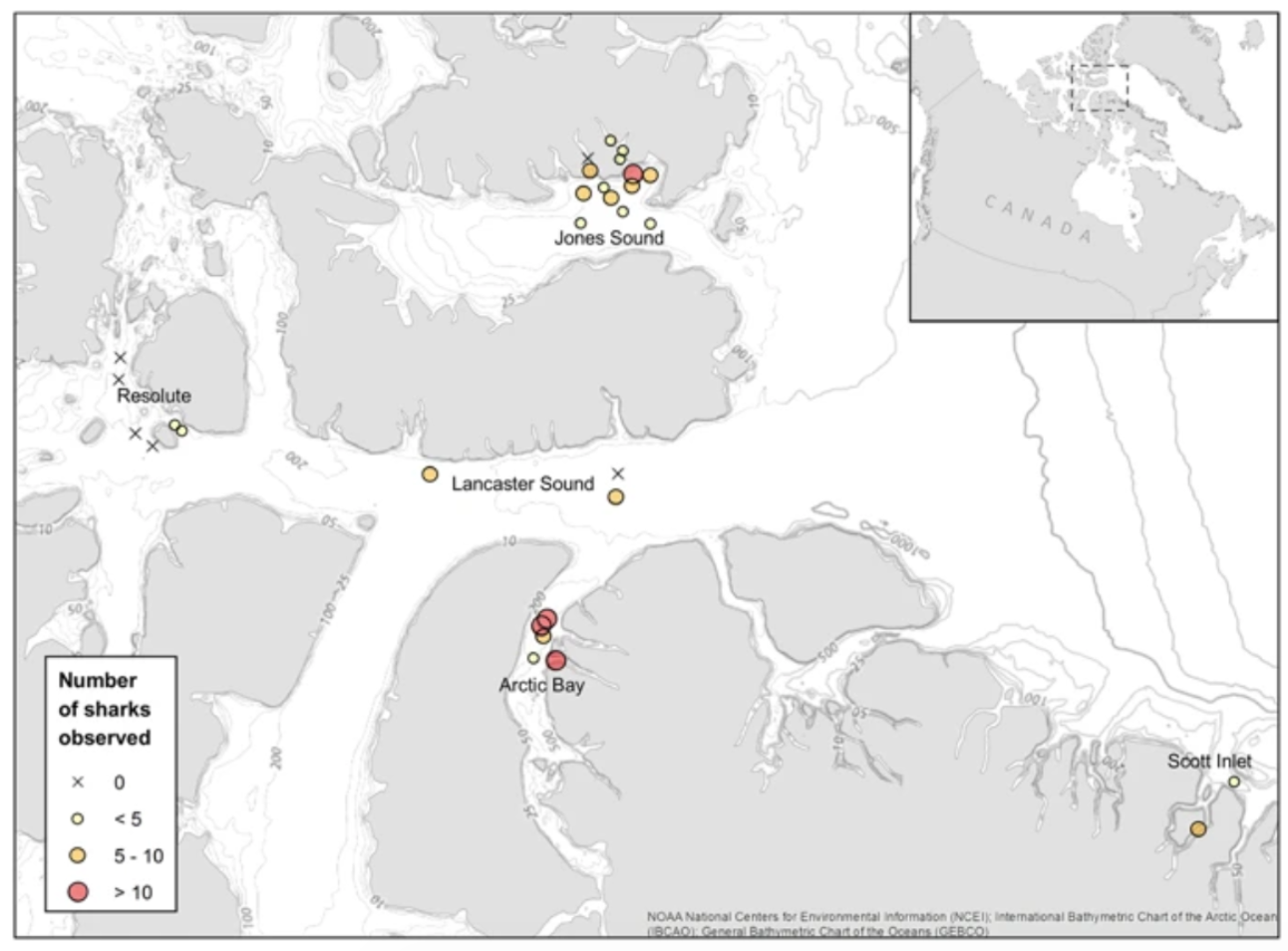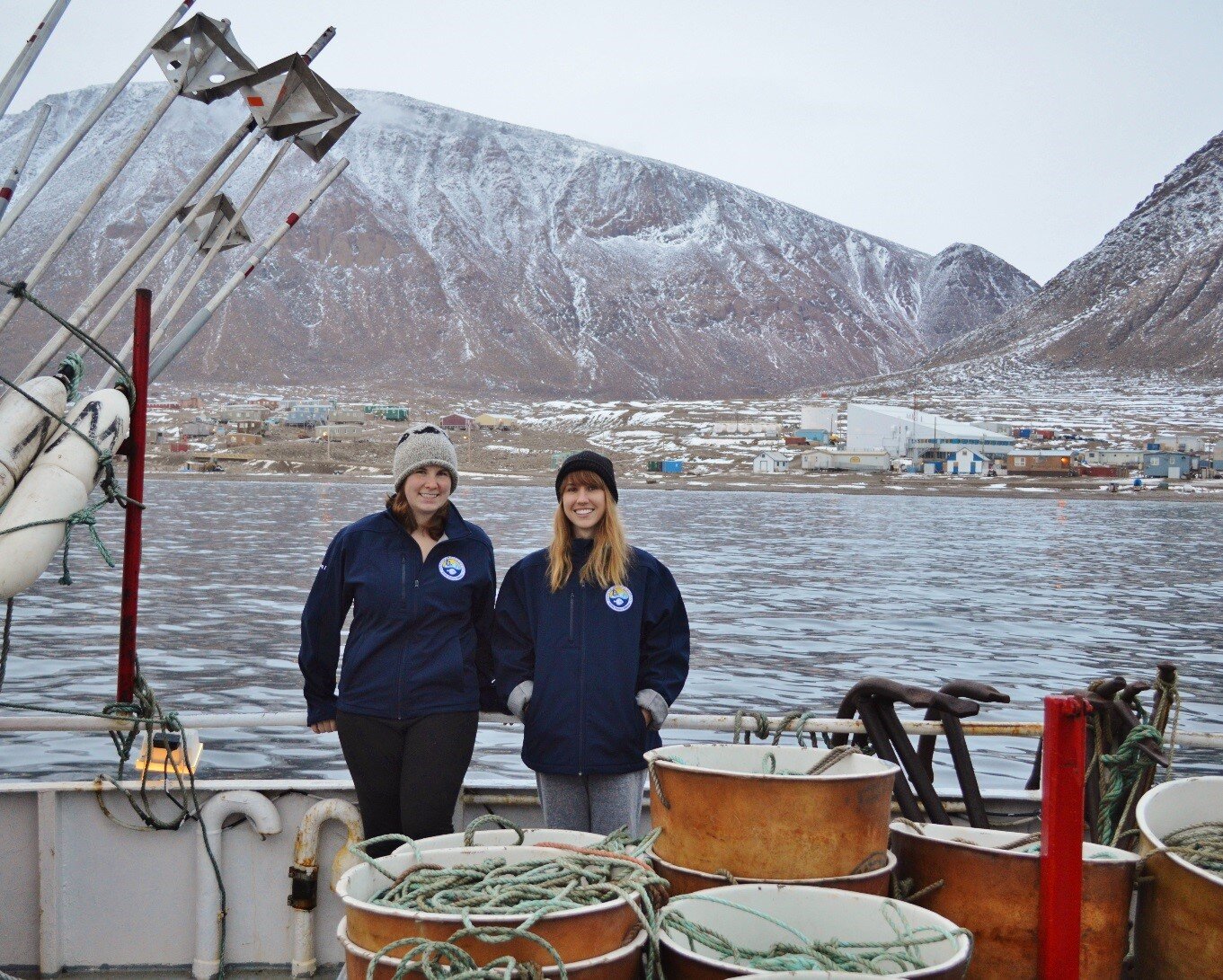グリーンランドのサメをプログラム可能な海底カメラで撮影
Potentially living over 400 years, Greenland Sharks have the longest lifespan of any known vertebrate
Using the subsea scripting API on the programmable SubC camera, researchers were able to set up a time-lapse during their deployments
The results of the study illustrate the potential vulnerability of the Greenland Shark
マリンインスティテュートの友人たちは、調査の一環として258時間の映像を収集し、カナダのヌナブトの漁業開発と海洋保護のために、深海でデータの乏しい地域におけるグリーンランド・シャーク(Somniosus microcephalus)の局地的な密度を推定しました。
Blind Sharks with a Long Lifespan
The Greenland Shark is a majestic creature of the deep and one of the very few polar shark species. Potentially living over 400 years, it has the longest lifespan of any known vertebrate. Coming in at 7m long and up to 3100lbs, they are among the largest of sharks. And they’re blind! They aren’t born blind, but, all documented mature Greenland sharks have parasites attached to their eyeballs. Luckily, they have a very keen sense of smell that they rely on to hunt. As an adaptation to living in the deep, they have a high concentration of trimethylamine in their tissues, which causes the meat to be toxic.
This image identifies shark distributions in Lancaster Sound, Nunavut, Canada.
SubC Technology Makes Researching Easier
The study took place between July-September 2015 and 2016. It was conducted by deploying a baited autonomous imaging system -- the SubC Autonomous Camera System -- during joint exploratory fishing and scientific cruises. Using the subsea scripting API on the programmable subsea camera, they were able to set up a time-lapse during their 31 camera deployments. They discovered that the Greenland Shark arrived at 80% of the deployments with 142 individual sharks being identified from the video footage using unique marks on their skin.
Memorial UniversityのBrynn Devine氏とFisheries and Oceans CanadaのLaura Wheeland氏の研究者は、4K海底カメラに搭載された統合基準レーザーを用いて、ビデオ映像からサメの体長や泳ぎ速度などの追加データを収集しました。
ベイトカメラに引き寄せられたグリーンランドのサメの画像詳しくは論文をご覧ください。
The Species’ Vulnerability
"体長が3メートルを超えるものから、ある地域では1.5メートル以下の非常に小さなものまで、さまざまな大きさのサメを観察しました」とデバイン氏は言う。"驚くべきことに、この種の成熟時の最小サイズについての現在の理解に基づいて、私たちが観察したサメはどれも繁殖に十分な年齢に達していなかった。"
本研究の結果は、グリーンランド・シャークの潜在的な脆弱性を示しており、ヌナブト州のランカスター・サウンドのエコゾーンは北極圏の種にとって特に重要である可能性があることを示している。
グリーンランドのサメのロングサンプル映像をご覧ください。
彼らの信じられないような発見についての詳細は、以下の参考文献を参照してください。
参考にしてください。
引用。Devine, Brynn & Wheeland, Laura & Fisher, Jonathan.(2018).北極水域におけるグリーンランドシャーク(Somniosus microcephalus)の局所的な豊富さの初の推定。サイエンティフィック・リポーツ.8.https://doi.org/10.1038/s41598-017-19115-x
ニューファンドランド記念大学水産海洋研究所水産生態系研究センター。 https://www.mi.mun.ca/departments/centreforfisheriesecosystemsresearch/
ウィキペディア - グリーンランドシャーク:https://en.wikipedia.org/wiki/Greenland_shark



